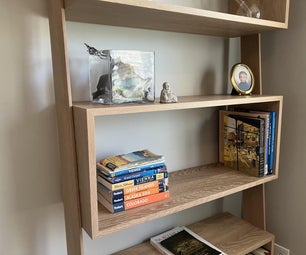Introduction: Old Fashioned Drawer Pulls
In an attempt to organise all the small things flooding the house, I decided to build a set of drawers in a recess of a wall from an early building expansion.
As I wanted a lot of drawers, I would need a lot of hardware, which would be the most expensive part of the project.
Furthermore, in a house a century old, I thought some hand-crafted pulls would fit in nicely.
This project can be fullfilled with hand-tools only, but I used a drill-press, a table-saw and a disc-sander as well.
Step 1: Design
There are a lot of different variants of this type of pulls, and I chose the simplest with a straight lower edge and an arc as the upper edge.
Then I made a sketch with the proper measures and transferred the sketch to the wood.
Step 2: Make a Die
With the layout on a piece of pine, I hollowed it with an iron. I suppose you can grind it if you want, but it is very easy and more satisfactory to do it by hand, not to mention avoiding noise and dust .
There was no need to make it perfect, since I wanted a rustic look, and I´m not a silver-smith.
Step 3: Cut and Drill the Plates.
I used 2mm Aluminium, which I cut in squares and trimmed off the superfluous corner;
a certain overhang is needed though, as the metal stretches.
A simple template is needed to punch the drilling-marks, and I felt no need to drill by hand.
Step 4: Screw the Piece of Plate to the Die.
Use the 2 holes you need to screw the pull to the drawer, and a third that helps holding down during the chase to fix it to the die.
Step 5: Hammer Away
Use a hammer with a ball-head to form the handle.
This is not difficult at all, and takes only minutes;
it is not silver, and no-one will scrutinize it.
Step 6: Trim the Edge
I felt no need to use hand-tools here either, so I simply cut the edge on the table-saw.
,
Step 7: Smooth the Edge.
Unscrew and start rounding the edge with files and sanding.
Step 8: Cut the Upper Side.
Use a simple template to mark the cutting line and remove the waste with a pair of scissors or a bandsaw.
Step 9: Sand or File the Upper Edge
If you care for a perfect arc, make a jig.
Since I like the individual look the hand-crafted artefacts have, I trusted my eye for an even edge.
After the rounding of the corners, this is ready to be mounted on the drawer, no finishing needed.
Step 10: The Result
Now comes the difficult part:
making a storing-system that works, and keeping all things in their places.

Second Prize in the
Metalworking Contest













